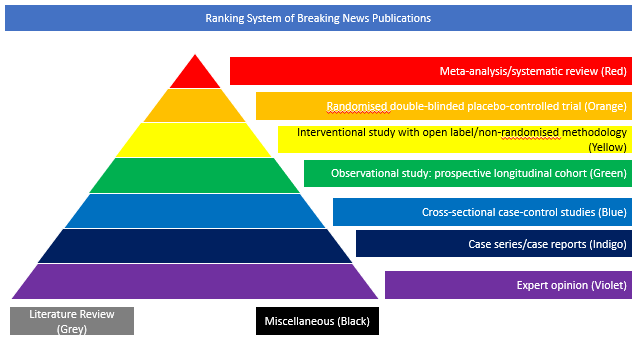Meta-analysis Systematic Review (Red)
The objective of this article was to investigate the hypothesis that strokes occurring in patients with COVID-19 have distinctive features. The authors investigated stroke risk, clinical phenotypes, and outcomes in this population. They performed a systematic search resulting in 10 studies reporting stroke frequency among COVID-19 patients, which were pooled with one unpublished series from Canada. They applied random-effects meta-analyses to estimate the proportion of stroke among patients with COVID-19 infection and performed an additional systematic search for case series of stroke in COVID-19 patients (n=125) pooling these data with 35 unpublished cases from Canada, USA, and Iran. Furthermore, they analysed clinical characteristics and in-hospital mortality stratified into age groups (<50, 50-70, >70 years) and applied cluster analyses to identify specific clinical phenotypes and their relationship with death. They found that the proportion of COVID-19 patients with stroke (1.8%, 95%CI 0.9-3.7%) and in-hospital mortality (34.4%, 95%CI 27.2-42.4%) was high. Mortality was 67% lower in patients <50 years-old relative to those >70 years-old (OR 0.33, 95%CI 0.12-0.94, P=0.039). Large vessel occlusion was twice as frequent (46.9%) as previously reported and was high across all age groups, even in the absence of risk factors or comorbidities. A clinical phenotype characterised by older age, a higher burden of comorbidities, and severe COVID-19 respiratory symptoms, was associated with the highest in-hospital mortality (58.6%) and a threefold increased risk of death compared to the rest of the cohort (OR 3.52, 95%CI 1.53-8.09, P=0.003). The authors concluded that stroke is relatively frequent among COVID-19 patients and has devastating consequences across all ages. The interplay of older age, comorbidities, and severity of COVID-19 respiratory symptoms was associated with an extremely elevated risk of mortality.
DOI: https://doi.org/10.1212/WNL.0000000000010851








